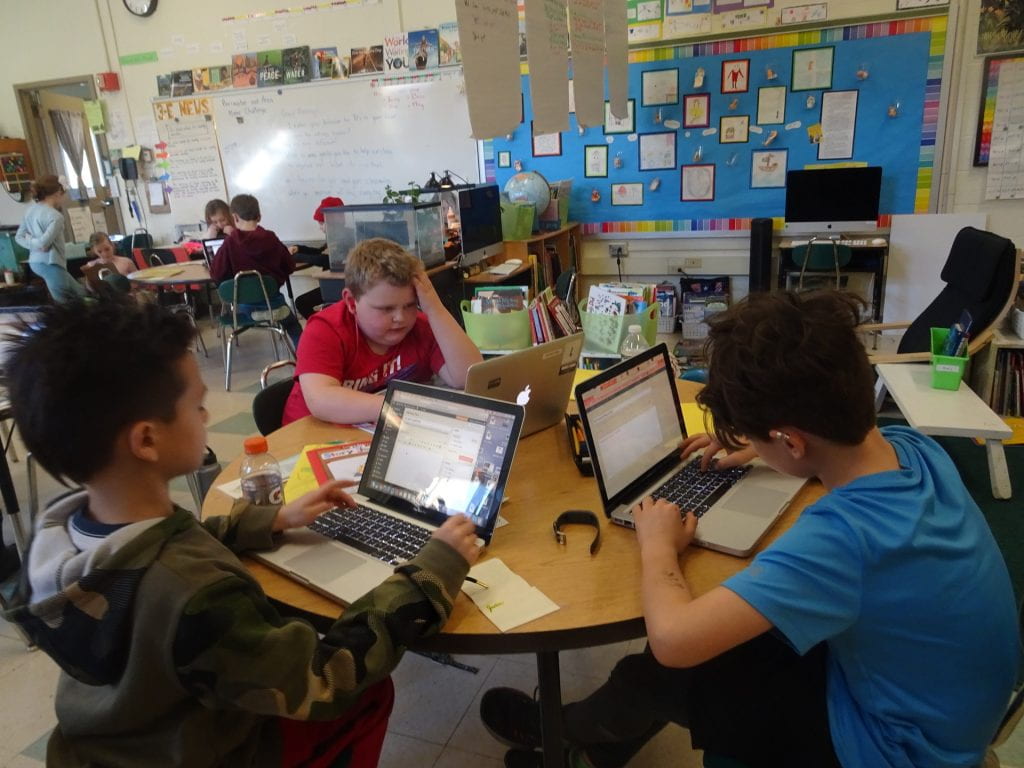 As I am preparing for conferences next week, I have again been stuck by what a huge growth year 3rdgrade is. Our curriculum is divided into grade spans. Third grade is the first year in the 3 to 5 span and what they are expected to accomplish is a lot. They are working hard to do that. I appreciate their attention and efforts.
As I am preparing for conferences next week, I have again been stuck by what a huge growth year 3rdgrade is. Our curriculum is divided into grade spans. Third grade is the first year in the 3 to 5 span and what they are expected to accomplish is a lot. They are working hard to do that. I appreciate their attention and efforts.
S.E.L. – Sorting and Dealing With Problems
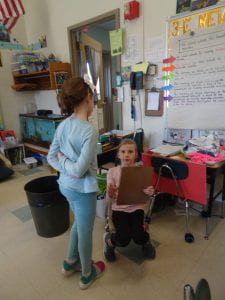 This week we’ve begun a new set of discussions about problems and behaviors. We’ve learned that dangerous and destructive problems are ones where you really need to get help. When you’re afraid you or someone else will get hurt you need to get help from an adult. When you see that things are being ripped and ruined you need to get help. We’ve also talked about “annoying” behavior as different from dangerous and destructive behavior. Our class definition of annoying behavior is that it is something that distracts attention from the appropriate task, is repetitive (not just once), and might be intentionally teasing.
This week we’ve begun a new set of discussions about problems and behaviors. We’ve learned that dangerous and destructive problems are ones where you really need to get help. When you’re afraid you or someone else will get hurt you need to get help from an adult. When you see that things are being ripped and ruined you need to get help. We’ve also talked about “annoying” behavior as different from dangerous and destructive behavior. Our class definition of annoying behavior is that it is something that distracts attention from the appropriate task, is repetitive (not just once), and might be intentionally teasing.
Dealing with annoying behavior is tricky and we’ll see if we can find ways to cooperate and compromise in our classroom so everyone feels comfortable, supported and heard. We hope we can all be respectful, and find ways to behave so everyone can happily do his or her best in the classroom.
Story Mountains
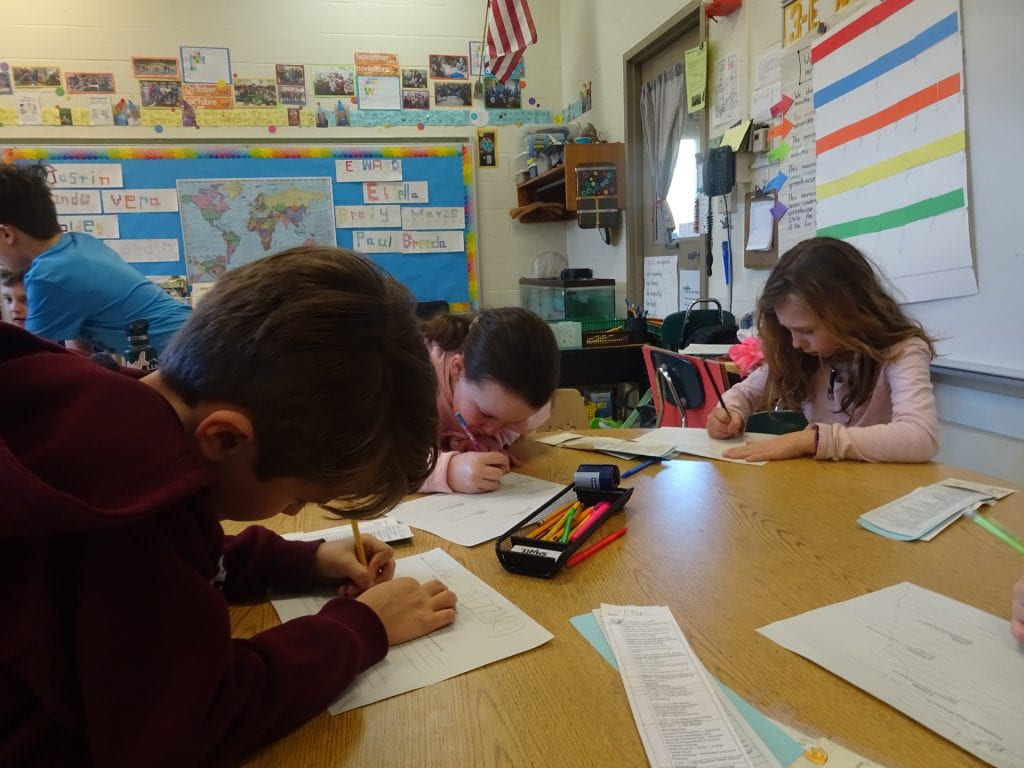 We’ve been exploring plot and the plot line of narratives. We’ve been climbing story mountains together and individually. We’ve been noticing how stories begin with a lead that establishes who the main characters are and initiates the main action. This is followed by a series of small events and descriptive details that build to the main problem. This problem is something that the characters have to deal with and find a way to get through it. The main character learns something or is changed when the problem is resolved. And finally, the story ends in a way that connects back to the beginning. The story has come full circle.
We’ve been exploring plot and the plot line of narratives. We’ve been climbing story mountains together and individually. We’ve been noticing how stories begin with a lead that establishes who the main characters are and initiates the main action. This is followed by a series of small events and descriptive details that build to the main problem. This problem is something that the characters have to deal with and find a way to get through it. The main character learns something or is changed when the problem is resolved. And finally, the story ends in a way that connects back to the beginning. The story has come full circle.
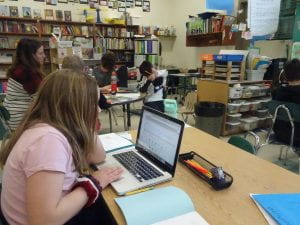 You’ll see a couple examples this work in your child’s folder this week. Some of the children easily follow the characters through the story. They connect with them and recognize how they are interacting with the action of the story. Others find it more challenging to follow the character’s growth throughout the story. When you are reading together, talk to you child about the story mountain found in the books you are sharing. It will strengthen his/her understanding of the story and build inferential comprehension skills too.
You’ll see a couple examples this work in your child’s folder this week. Some of the children easily follow the characters through the story. They connect with them and recognize how they are interacting with the action of the story. Others find it more challenging to follow the character’s growth throughout the story. When you are reading together, talk to you child about the story mountain found in the books you are sharing. It will strengthen his/her understanding of the story and build inferential comprehension skills too.
Furthering Our Use of Elaboration Strategies
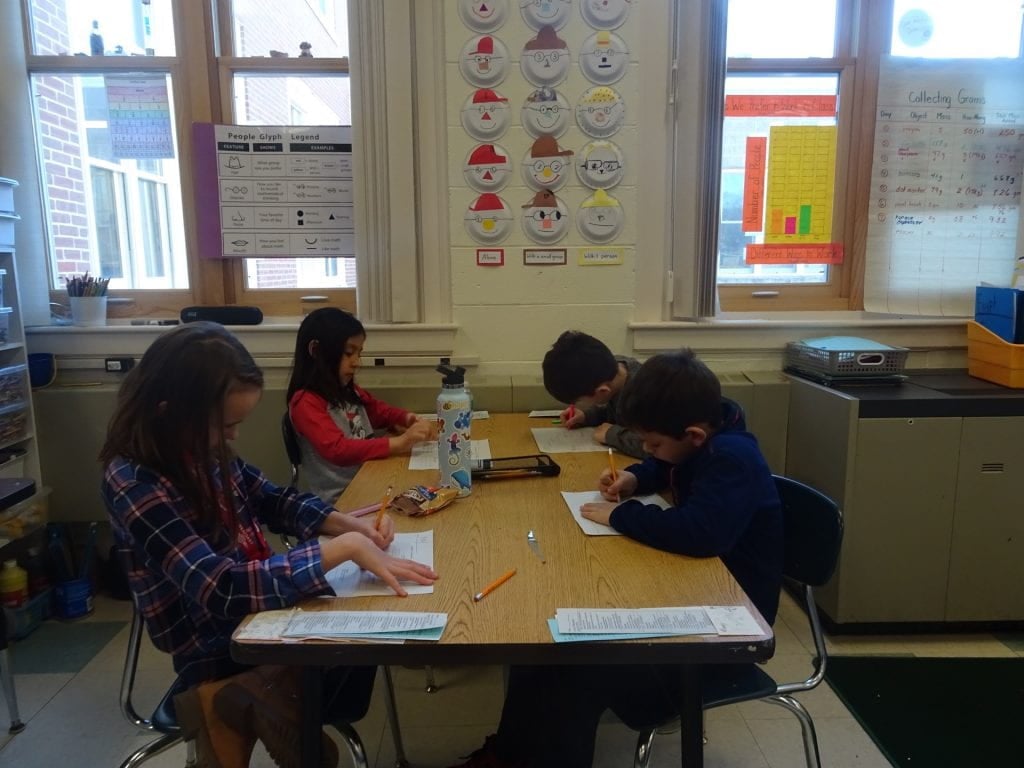 Earlier in the year we learned how to develop more descriptive sentences by adding adjectives, and details telling when, where, why and how. A simple sentence can become quite interesting. We also learned about the “power of 3” to help guide our choices because generally three is enough. Three adjectives, three actions, or three repetitions are enough to make the idea stick without becoming monotonous.
Earlier in the year we learned how to develop more descriptive sentences by adding adjectives, and details telling when, where, why and how. A simple sentence can become quite interesting. We also learned about the “power of 3” to help guide our choices because generally three is enough. Three adjectives, three actions, or three repetitions are enough to make the idea stick without becoming monotonous.
This week we’ve begun learning strategies to use to make our stories and informational writing more elaborate. So far we have practiced adding descriptive details to help readers develop a clearer picture in their mind of the setting. We’ve also learned how to add actions to animate the story. In our example a storm is coming and so we added sentences about the wind and people rushing to get out of the weather. We have two more strategies to learn: adding dialogue and introducing the characters’ inner thought to add emotion to our writing.
Bits and Pieces –
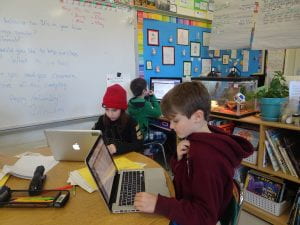 We are continuing to learn cursive. We are on our third set of letters – the Loop Group. Those letters are b, f, h, k, l and e. Most of the class is having fun learning cursive, though it is challenging.
We are continuing to learn cursive. We are on our third set of letters – the Loop Group. Those letters are b, f, h, k, l and e. Most of the class is having fun learning cursive, though it is challenging.- We are enjoying Winterhouse. We are still in the build up portion of the story. There are lots of characters and lots of details to keep track of.
- The children are researching their countries. They are learning about the geography and landforms, unique plants and animals, cultural celebrations and traditions, historic sites and landmarks and important museums, monuments or memorials. This week the children wrote letters asking question on their blogs. We hope to get some responses from around the world. If you have connections, please share.
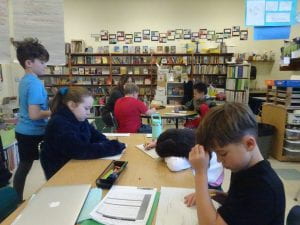 Our next science unit is weather and so we have been building our background knowledge and understanding by reading poems and books about their topic during our shared reading lessons.
Our next science unit is weather and so we have been building our background knowledge and understanding by reading poems and books about their topic during our shared reading lessons.- We have been learning about elapse time, equivalent fractions, and strategies for solving multistep problems. We play games to practice basic facts in all four operations and we’re learning about perimeter and area.
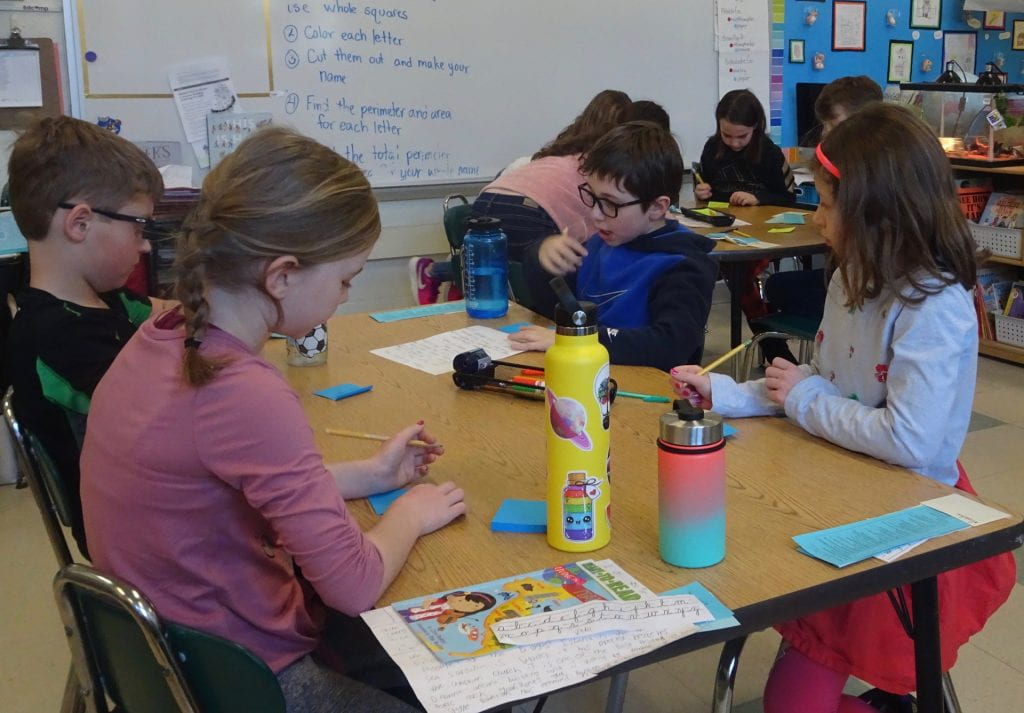 This week we began our global geography inquiry. In Open Circle we’ve been talking about speaking up and setting goals. We’ve been reading books around the theme of kindness while we learn about plot lines and we’ve been practicing our kite string letters in cursive.
This week we began our global geography inquiry. In Open Circle we’ve been talking about speaking up and setting goals. We’ve been reading books around the theme of kindness while we learn about plot lines and we’ve been practicing our kite string letters in cursive.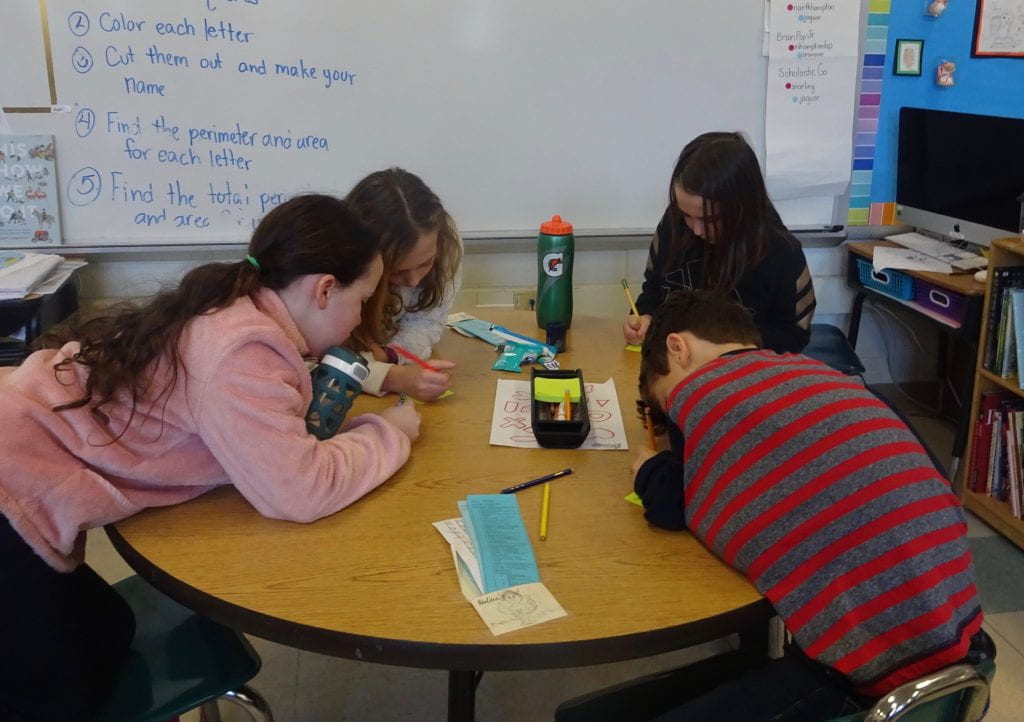 We’ve read several books this week that help us consider what it means to be kind. It seems that it is the little things that matter most. We’re trying to see how we can make choices throughout our day that show others we are choosing kindness by following the rules and meeting classroom and school expectations so everyone has the opportunity to learn.
We’ve read several books this week that help us consider what it means to be kind. It seems that it is the little things that matter most. We’re trying to see how we can make choices throughout our day that show others we are choosing kindness by following the rules and meeting classroom and school expectations so everyone has the opportunity to learn.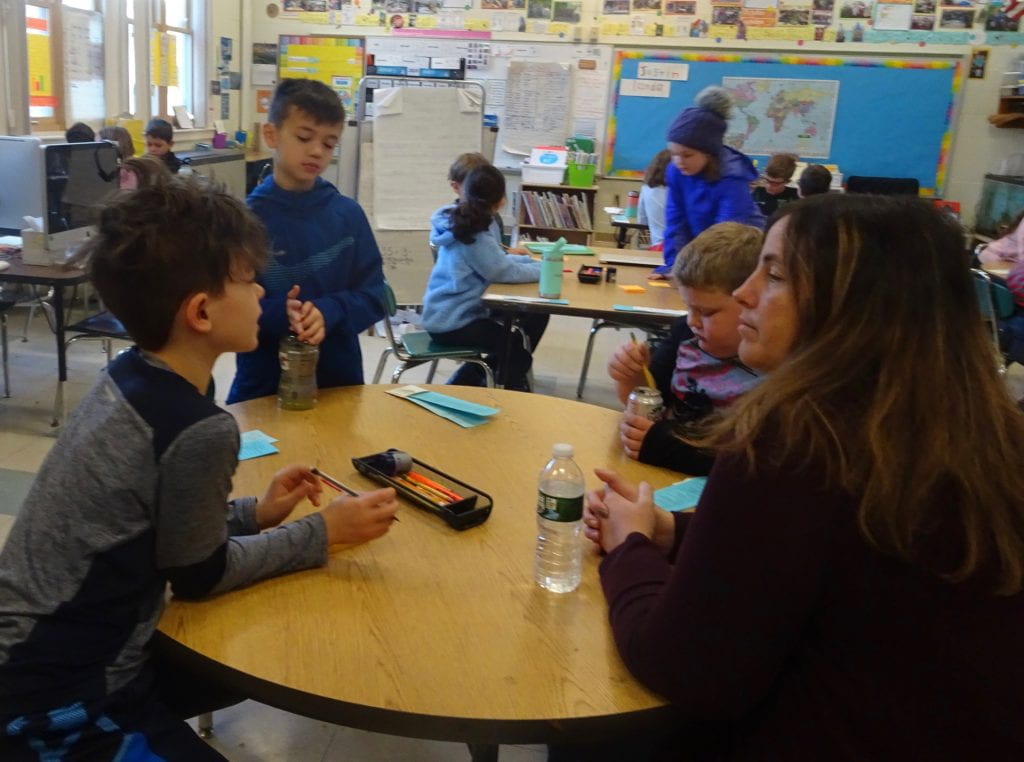 The children started learning about the flag and are now exploring geography and landforms, unique plant and animals, historic sites, cities and the countryside, museums, parts and monuments and cultural festivals and celebrations. The final project will be to create a travel journal demonstrating what you know about nonfiction features in writing and creating several souvenirs collected along the way. The children will“pack” the journal and the souvenirs into a suitcase they will have created and present their journey.
The children started learning about the flag and are now exploring geography and landforms, unique plant and animals, historic sites, cities and the countryside, museums, parts and monuments and cultural festivals and celebrations. The final project will be to create a travel journal demonstrating what you know about nonfiction features in writing and creating several souvenirs collected along the way. The children will“pack” the journal and the souvenirs into a suitcase they will have created and present their journey.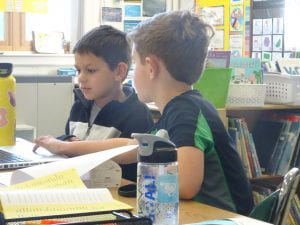 Throughout January we’ve been learning about fractions and how they compare. Fractions are featured on our calendar this month. We’ve played fraction bingo and are creating our own fraction bar sets so we can learn more about equivalent fractions.
Throughout January we’ve been learning about fractions and how they compare. Fractions are featured on our calendar this month. We’ve played fraction bingo and are creating our own fraction bar sets so we can learn more about equivalent fractions.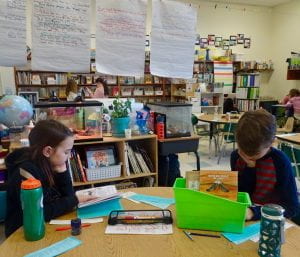 We’ve completed our second set of
We’ve completed our second set of  For this inquiry project you’ll be researching a country of your choice. You’ll be learning about the flag, and exploring outstanding landforms like waterfalls, mountains, lakes, etc. You’ll be discovering extraordinary habitats and 0ne-of-a-kind plants and animals found in your country. You’ll uncover historical sites and learn about the cultural heritage of your country. What festivals or celebrations would you hope to attend?
For this inquiry project you’ll be researching a country of your choice. You’ll be learning about the flag, and exploring outstanding landforms like waterfalls, mountains, lakes, etc. You’ll be discovering extraordinary habitats and 0ne-of-a-kind plants and animals found in your country. You’ll uncover historical sites and learn about the cultural heritage of your country. What festivals or celebrations would you hope to attend? These sites have connections to each of the countries we are hoping to learn about:
These sites have connections to each of the countries we are hoping to learn about: These links have some of the countries we are researching:
These links have some of the countries we are researching: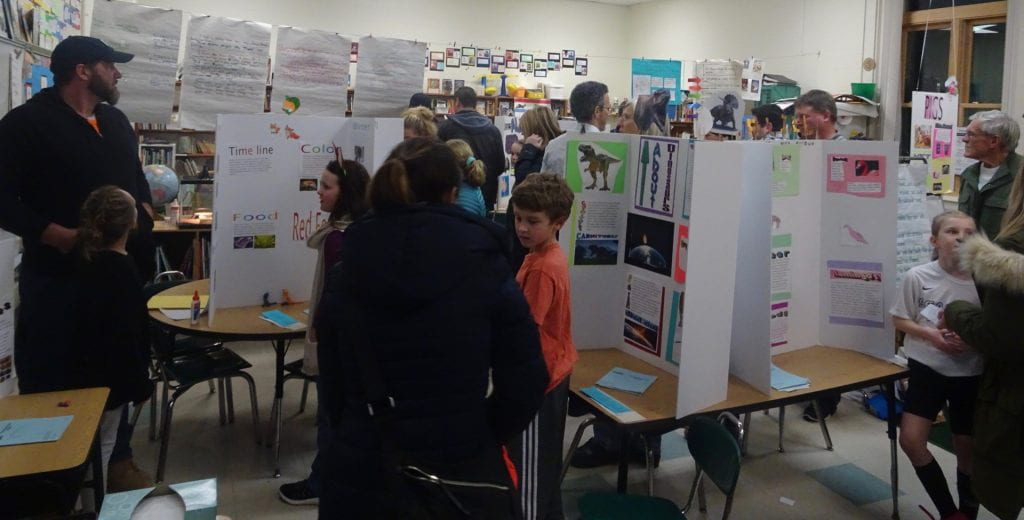 Thank you for supporting the children at 3E’s Inquiry Wonderland. They had a “wonder-full” time sharing their work with you. After the excitement of the museum, we’ve had an ordinary week of reading, writing and math.
Thank you for supporting the children at 3E’s Inquiry Wonderland. They had a “wonder-full” time sharing their work with you. After the excitement of the museum, we’ve had an ordinary week of reading, writing and math.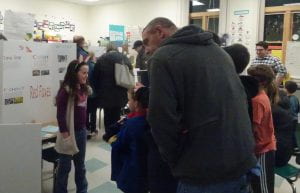 This week I asked the children to think closely about what they are reading. I’ve asked them to think about how their book choices are helping them grow as readers and thinkers. Many of the children are reading series together so they can talk about them – the Dogman and Amulet series are being read in this way. Some of the children prefer nonfiction and are reading the Magic Tree House fact guides.
This week I asked the children to think closely about what they are reading. I’ve asked them to think about how their book choices are helping them grow as readers and thinkers. Many of the children are reading series together so they can talk about them – the Dogman and Amulet series are being read in this way. Some of the children prefer nonfiction and are reading the Magic Tree House fact guides.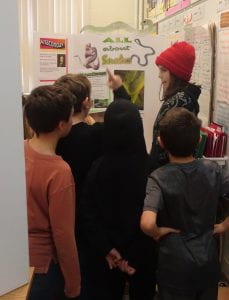 I’ve been conferencing and reading with the children to see if they are using any of the strategies we use during class read-alouds and in book clubs on their own to boost their understanding. Some of the children are, but most are not. Some of the children can talk about what they are thinking about as they read – how they are connecting with the characters or what they are learning, but most are not yet making those deep connections. This is something we’ll work to develop in the weeks to come.
I’ve been conferencing and reading with the children to see if they are using any of the strategies we use during class read-alouds and in book clubs on their own to boost their understanding. Some of the children are, but most are not. Some of the children can talk about what they are thinking about as they read – how they are connecting with the characters or what they are learning, but most are not yet making those deep connections. This is something we’ll work to develop in the weeks to come.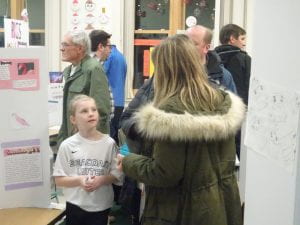 Writing dialogue is one technique that authors use to give their characters personality and to move a story along in time without explaining every moment. Writing dialogue also follows some specific rules: a new line for each speaker, the first line indented, quotation marks around the talking, including frequent dialogue tags and careful use of commas and end-mark punctuation.
Writing dialogue is one technique that authors use to give their characters personality and to move a story along in time without explaining every moment. Writing dialogue also follows some specific rules: a new line for each speaker, the first line indented, quotation marks around the talking, including frequent dialogue tags and careful use of commas and end-mark punctuation. We’ve been practicing this with partners. We’ve written about weekends and about our inquiry projects. We’ve created puppets and created dialogues for them as well. With each practice the children are becoming more skilled. Several of the children have been able to include accurately written and punctuated dialogues in their independent writing. That’s a great thing to see.
We’ve been practicing this with partners. We’ve written about weekends and about our inquiry projects. We’ve created puppets and created dialogues for them as well. With each practice the children are becoming more skilled. Several of the children have been able to include accurately written and punctuated dialogues in their independent writing. That’s a great thing to see.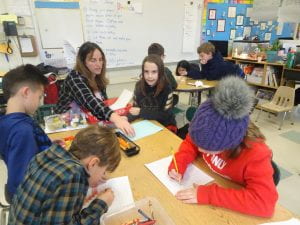 For the past several weeks one of the stations during our math block has been focused on developing an understanding of perimeter. The students have created and measured polygons made from straws and pipe cleaners. They measured a variety of triangles, quadrilaterals and hexagons taped on the floor and added the sides to find each perimeter. They have also measured things in classroom – most of these items have been rectangles. Several of the children realized they only needed to measure two of the sides and double to find the actual perimeter.
For the past several weeks one of the stations during our math block has been focused on developing an understanding of perimeter. The students have created and measured polygons made from straws and pipe cleaners. They measured a variety of triangles, quadrilaterals and hexagons taped on the floor and added the sides to find each perimeter. They have also measured things in classroom – most of these items have been rectangles. Several of the children realized they only needed to measure two of the sides and double to find the actual perimeter.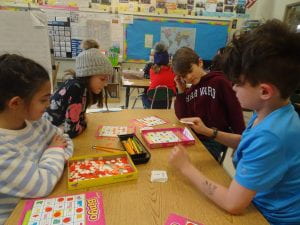
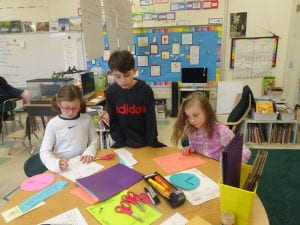 We finished The Mystery at Pine Lakeand discovered who had put the board in the dam that raised the water level and threatened the eggs in the loons’ nest. It was not who we thought it would be at all. That
We finished The Mystery at Pine Lakeand discovered who had put the board in the dam that raised the water level and threatened the eggs in the loons’ nest. It was not who we thought it would be at all. That 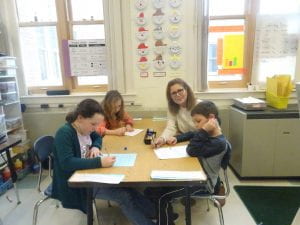 We are also continuing explore
We are also continuing explore 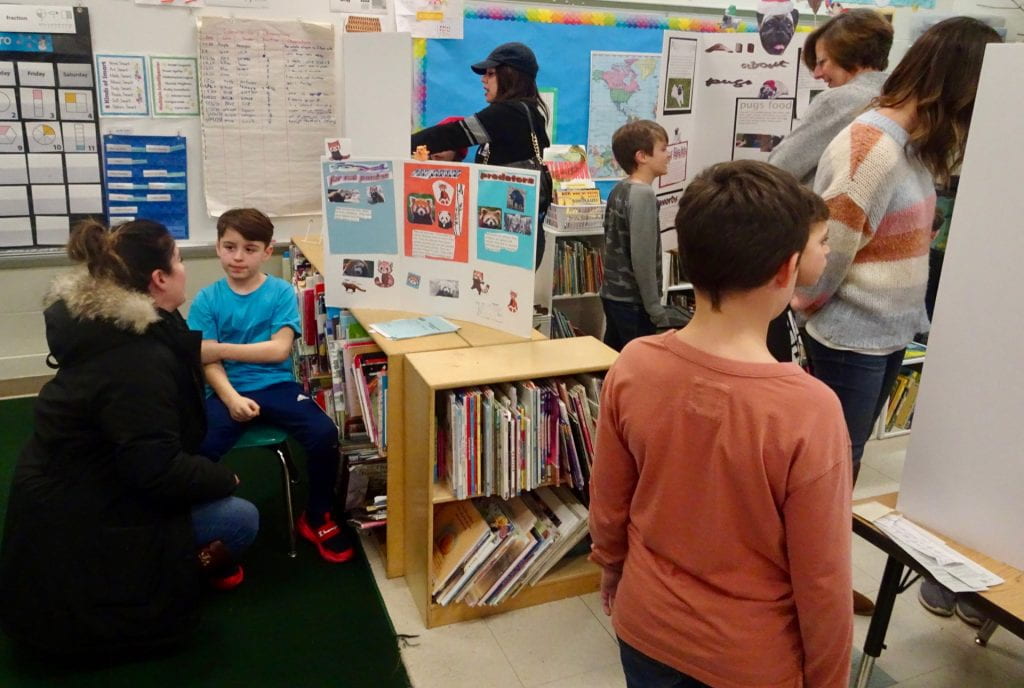
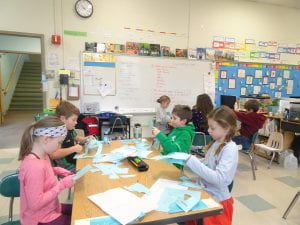 This week the children put the finishing touches on their inquiry research projects. They’ve done a lot and they are feeling proud of their accomplishments. We’ve been reading more about the world as we prepare for our next research project. We’re also learning about time and most exciting, has been learning cursive.
This week the children put the finishing touches on their inquiry research projects. They’ve done a lot and they are feeling proud of their accomplishments. We’ve been reading more about the world as we prepare for our next research project. We’re also learning about time and most exciting, has been learning cursive.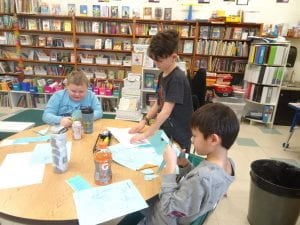 We are beginning to learn cursive letter formation. We are using a system called Loops and Groups. The letters are grouped according to how they are formed. Clock climbers start at the bottom, travel in an arch to 1 o’clock, retrace back down the line, curve up to complete the circle and then curve down to form the connector. We’ve learned a, d, g, q and c. It is challenging to keep the line going through all the letters and words. It is challenging to develop good letter formation habits – but mostly the class is having fun.
We are beginning to learn cursive letter formation. We are using a system called Loops and Groups. The letters are grouped according to how they are formed. Clock climbers start at the bottom, travel in an arch to 1 o’clock, retrace back down the line, curve up to complete the circle and then curve down to form the connector. We’ve learned a, d, g, q and c. It is challenging to keep the line going through all the letters and words. It is challenging to develop good letter formation habits – but mostly the class is having fun.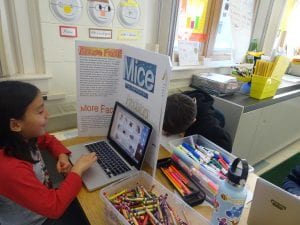 This week the children chose the name for their inquiry magazine. They decided to name it 1… 2… 3…Inquiry. They also designed the cover and created a picture representing their inquiry topic for it.
This week the children chose the name for their inquiry magazine. They decided to name it 1… 2… 3…Inquiry. They also designed the cover and created a picture representing their inquiry topic for it.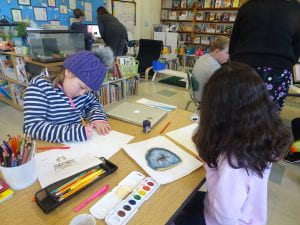 Everyone has completed all the parts of their project. Here are the steps behind what you will see. First they read, researched and took notes. Next they determined what was important and decided how to organize the information into categories and paragraphs. Then they designed and created their museum displays. Once the displays were done, they selected the information they wanted to share in a classroom magazine. They designed and created pages for that. (We hope this will be ready for the museum, though it may take a bit longer to be put together at the printer.) Next they create a picture to hang in the hallway outside the classroom. This is to give museumgoers a preview of what they will find inside. Each of these pictures is captioned with a sentence showing how we adjectives add detail to writing. And finally, the last piece of the project was to create a picture for the cover of the magazine. Yesterday was the deadline – and they are all ready. We can’t wait for you to come and see.
Everyone has completed all the parts of their project. Here are the steps behind what you will see. First they read, researched and took notes. Next they determined what was important and decided how to organize the information into categories and paragraphs. Then they designed and created their museum displays. Once the displays were done, they selected the information they wanted to share in a classroom magazine. They designed and created pages for that. (We hope this will be ready for the museum, though it may take a bit longer to be put together at the printer.) Next they create a picture to hang in the hallway outside the classroom. This is to give museumgoers a preview of what they will find inside. Each of these pictures is captioned with a sentence showing how we adjectives add detail to writing. And finally, the last piece of the project was to create a picture for the cover of the magazine. Yesterday was the deadline – and they are all ready. We can’t wait for you to come and see.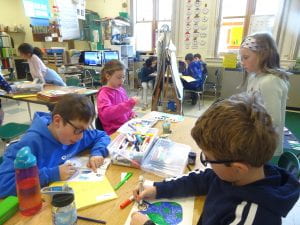 We hope when you come that you will tour each of the displays and talk to the researchers about their inquiry. They are ready to talk to you about why they chose their topic and the information they found most interesting as they researched and wrote. I know I have written this before, but please remember, we asked the children to get help with editing before printing. Some of them did, so their spelling and punctuation was corrected and some of them did not. We hope you can look beyond that, at this point. Learning that editing and revision is an important step in finishing is part of the process. Our next research project will begin next week. The children will have an opportunity to immediately apply what they learn from this project in that one.
We hope when you come that you will tour each of the displays and talk to the researchers about their inquiry. They are ready to talk to you about why they chose their topic and the information they found most interesting as they researched and wrote. I know I have written this before, but please remember, we asked the children to get help with editing before printing. Some of them did, so their spelling and punctuation was corrected and some of them did not. We hope you can look beyond that, at this point. Learning that editing and revision is an important step in finishing is part of the process. Our next research project will begin next week. The children will have an opportunity to immediately apply what they learn from this project in that one.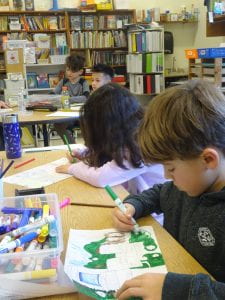 We’ve created
We’ve created 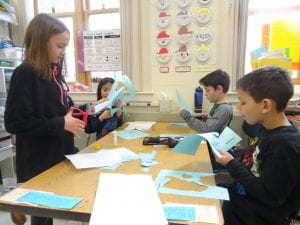
 Happy New Year! I hope you had a restful, healthy and wonderful vacation. It seems as though the children made wonderful memories – they were full of appreciation and had much to celebrate and share.
Happy New Year! I hope you had a restful, healthy and wonderful vacation. It seems as though the children made wonderful memories – they were full of appreciation and had much to celebrate and share.